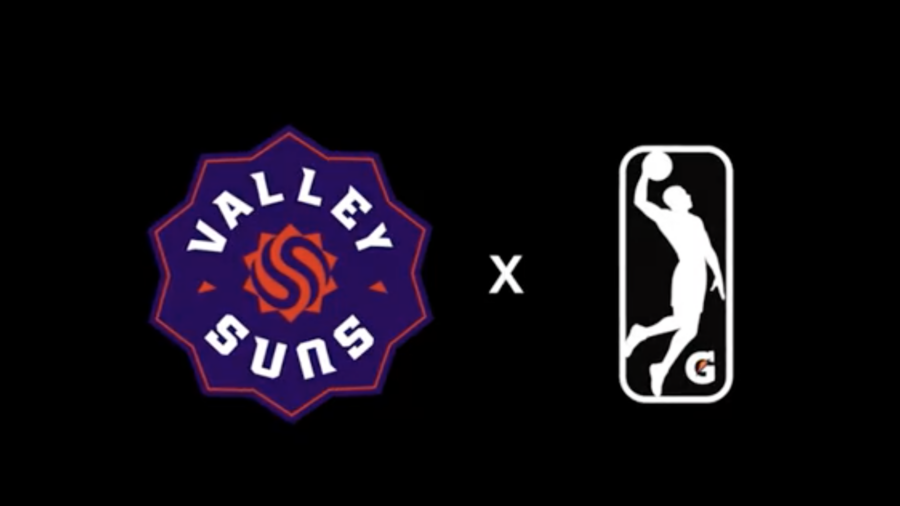
The Phoenix Suns will have to maximize every chance for improving their roster over the next couple of years and they reopened one of those paths by getting back a G League franchise.
They revealed on Wednesday it will be known as the Valley Suns, with home games being played at Mullett Arena in Tempe.
This move from owner Mat Ishbia corrects one of former owner Robert Sarver’s most foolish and quite honestly cheap choices over a tenure full of those when he sold Phoenix’s G League franchise in 2021 to the Detroit Pistons. This was just a couple years after two-way contracts were implemented into the NBA, expanding rosters so additional players could be developed with the G League in mind.
“The G League is a staple of many NBA franchises. … You gotta develop talent,” Suns CEO Josh Bartelstein said on Wednesday. “The way you develop talent is having them play.”
The majority of the frustration inspired by that decision was the lack of logic in refusing to use a tool that could possibly make the roster better, both in the short term and long term. The G League certainly works. Yes, the success stories are rare for finding a diamond in the rough. But it happens and its value goes beyond that.
Brief stints for past high selections in the NBA Draft can help keep their progress fresh while more deeper finds that don’t have a chance to show what they can do in an NBA rotation can instead use the G League to showcase their worth.
This has fast-tracked guys in the past like Danny Green, Pascal Siakam and Fred VanVleet. Other talents needed more baking time, where high-impact role players from this year’s playoffs like New York Knicks center Isaiah Hartenstein and Dallas Mavericks wing Derrick Jones Jr. are current examples.
Go back a few more postseasons and you’ll find Gabe Vincent, the starting point guard for the Miami Heat on a Finals team in 2023 and sparkplug Gary Payton for the 2022 winner Golden State Warriors. Kris Dunn, a top-five pick in 2016, used G League experience last season to reemerge on the Utah Jazz. Current Sun Damion Lee has 78 games played in the G League over three years. The list goes on.
Oftentimes after Suns workouts and shootarounds, the “Stay Ready Crew” would run 5-on-5 scrimmages to get some court time. This is a mix of players out of the rotation, two-ways and staff members of the coaching staff forming the games that are a fairly common practice around the league. This was more or less the best shot two-way players Udoka Azubuike, Saben Lee and Ish Wainright had at keeping up their game conditioning while also getting some type of live reps.
Now with the Valley Suns, if Phoenix’s center rotation is completely healthy and has no reason to make someone like Azubuike even available for games, he can spend a few days or weeks in Tempe really working at his game. Two-way guys obviously get an elevated role within the offense when on the G League, so the difference in growth chance is drastic.
“They spent the whole year with the Suns and when the season starts and you’re playing every other day, it’s hard to stay in shape, hard to maintain a rhythm,” Bartelstein said of those three.
And those games that two-way players are involved for matter. The contract runs out once the games limit is met, a problem the Suns have run into in the past with both Lee and Wainright. If Lee was just one more guard injury away from being needed to play, he had to show up. A process somewhat similar to emergency call-ups in baseball can be very fluid thanks to the close proximity.
The Tempe arena is within 30 minutes of the Suns’ practice site in Scottsdale and the Footprint Center in Phoenix. This is not especially popular in the NBA. Of the 29 other affiliates, seven are in another state entirely and nine more have at least an hour of drive between arenas.
“We study it,” Bartelstein said. “If you look at the utilization rate of teams, when they’re outside of two hours, they don’t use it. Because it’s just hard. Two hours each way, it looked like a chore for the players to get there, a lot of times (there are not) direct flights [and it’s] long travel.”
The Suns can use the G League club in a few different ways. If a player is rehabbing an injury, there are more people around to get some other run in instead of having that process interfere with the Suns’ normal practice times. Phoenix has the 22nd pick in the 2024 NBA Draft, and as a hopeful contender again, the Suns could select a player that isn’t a threat for minutes on opening night. That person could bounce between being a sponge at Suns practices to learn and playing games in Tempe to keep getting better.
Bartelstein wasn’t able to totally commit to if the Valley Suns will solely operate out of the Suns’ own practice facility but thinks Phoenix will offer the best practice situation in the G League for the players and one of the best arenas as well. As he put it, members of the G League squad will be able to show what they can do right in front of Kevin Durant, Devin Booker, Mike Budenholzer or James Jones.
Phoenix has not finalized a coaching team yet, something it will get done by summer league in early July. It also has an expansion draft to consider, when the Valley Suns will be able to build their full roster outside of the three open two-way slots. The Suns will also have an announcement coming soon on how to view the games, with streaming accessibility planned.